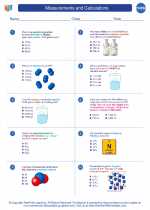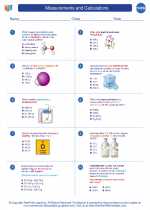Silicate Minerals
Silicate minerals are the most abundant group of minerals found in the Earth's crust. They are composed of silicon and oxygen, often combined with other elements such as aluminum, iron, magnesium, potassium, and others. Silicate minerals are classified based on the arrangement of the silicon and oxygen atoms in their crystal structure.
Structure of Silicate Minerals
Silicate minerals are characterized by their fundamental building block, the silicon-oxygen tetrahedron, which consists of a silicon atom bonded to four oxygen atoms in a three-dimensional arrangement. The arrangement of these tetrahedra and the presence of other elements give rise to the diverse range of silicate minerals.
Classification of Silicate Minerals
Silicate minerals are classified into several groups:
- Framework Silicates (Tectosilicates): These minerals have a three-dimensional framework of interconnected tetrahedra, forming a rigid structure. Examples include quartz and feldspar.
- Sheet Silicates (Phyllosilicates): These minerals have a two-dimensional sheet-like structure, with tetrahedra arranged in sheets. Examples include micas and clays.
- Chain Silicates (Inosilicates): These minerals have a chain-like structure, where tetrahedra are linked in chains. Examples include pyroxenes and amphiboles.
- Single Tetrahedra (Nesosilicates): These minerals consist of isolated tetrahedra not connected in chains, sheets, or frameworks. Examples include olivine and garnet.
Properties and Uses of Silicate Minerals
Silicate minerals exhibit a wide range of properties and have various uses:
- They are the primary components of most igneous rocks, such as granite and basalt.
- They are essential in the formation of sedimentary rocks, including sandstone and shale.
- They are important constituents of metamorphic rocks, such as schist and gneiss.
- Many silicate minerals are valuable resources for industrial applications, including ceramics, glassmaking, and construction materials.
- Some silicate minerals, such as quartz, are used in electronic devices and as gemstones.
Study Guide for Silicate Minerals
When studying silicate minerals, consider the following key points:
- Understand the structure of the silicon-oxygen tetrahedron and how it forms the basis of silicate minerals.
- Learn to identify and classify silicate minerals based on their structural characteristics and chemical composition.
- Explore the geological significance of silicate minerals and their roles in the formation of different types of rocks.
- Examine the industrial and commercial applications of silicate minerals and their economic importance.
- Practice identifying common silicate minerals through visual recognition and mineral testing techniques.
By mastering the properties and classifications of silicate minerals, you can gain a deeper understanding of the Earth's composition and the diverse applications of these essential minerals.
.◂Chemistry Worksheets and Study Guides High School. Measurements and Calculations

 Worksheet/Answer key
Worksheet/Answer key
 Worksheet/Answer key
Worksheet/Answer key
